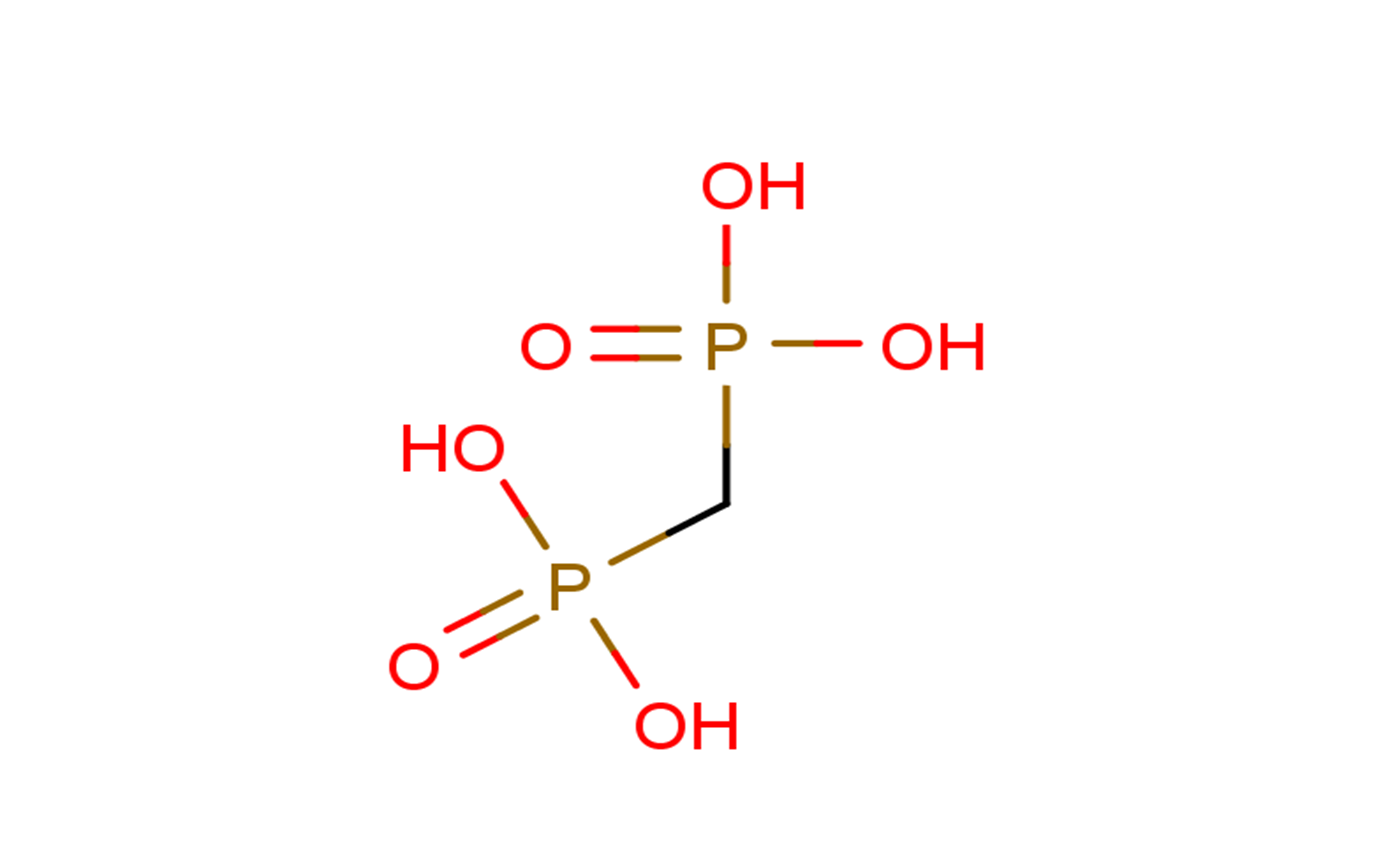
Medronic acid
CAS No. 1984-15-2
Medronic acid( Methylenediphosphonic acid )
Catalog No. M23896 CAS No. 1984-15-2
Medronic acid has affinity for and adheres to the surface of hydroxyapatite crystals in the bone matrix.?
Purity : >98% (HPLC)
 COA
COA
 Datasheet
Datasheet
 HNMR
HNMR
 HPLC
HPLC
 MSDS
MSDS
 Handing Instructions
Handing Instructions
| Size | Price / USD | Stock | Quantity |
| 100MG | 37 | In Stock |


|
| 200MG | Get Quote | In Stock |


|
| 500MG | Get Quote | In Stock |


|
| 1G | Get Quote | In Stock |


|
Biological Information
-
Product NameMedronic acid
-
NoteResearch use only, not for human use.
-
Brief DescriptionMedronic acid has affinity for and adheres to the surface of hydroxyapatite crystals in the bone matrix.?
-
DescriptionMedronic acid has affinity for and adheres to the surface of hydroxyapatite crystals in the bone matrix.?Medronic acid is a methylene-substituted bisphosphonate.?Medronic acid accumulates at sites of osteoid mineralization and can be used, complexed with radioisotopes in bone imaging.?
-
In Vitro——
-
In Vivo——
-
SynonymsMethylenediphosphonic acid
-
PathwayOthers
-
TargetOther Targets
-
RecptorOthers
-
Research Area——
-
Indication——
Chemical Information
-
CAS Number1984-15-2
-
Formula Weight176
-
Molecular FormulaCH6O6P2
-
Purity>98% (HPLC)
-
SolubilityDMSO:250 mg/mL (1420.45 mM; Need ultrasonic)
-
SMILESO=P(O)(O)CP(O)(O)=O
-
Chemical Name——
Shipping & Storage Information
-
Storage(-20℃)
-
ShippingWith Ice Pack
-
Stability≥ 2 years
Reference
1.Ohta Y, et al. Salt Tolerance Enhancement of Liquid Chromatography-Matrix-Assisted Laser Desorption/Ionization-Mass Spectrometry Using Matrix Additive MethylenediphosphonicAcid. Mass Spectrom (Tokyo). 2014;3(1):A0031.
molnova catalog



related products
-
Naringenin triacetat...
Naringenin triacetate exhibits a better binding affinity with multiple crystal structures of first bromodomain BRD4 (BRD4 BD1) when compared with the known inhibitors.
-
Echinacoside
Echinacoside is a natural polyphenolic compound, has various kinds of pharmacological activities, such as antioxidative, anti-inflammatory, neuroprotective, hepatoprotective, nitric oxide radical-scavenging and vasodilative ones
-
Sodium taurodeoxycho...
Sodium taurodeoxycholate hydrate has been used in a study to assess the effect of submicellar concentrations of bile salts on the lipid bilayer membrane.



 Cart
Cart
 sales@molnova.com
sales@molnova.com


